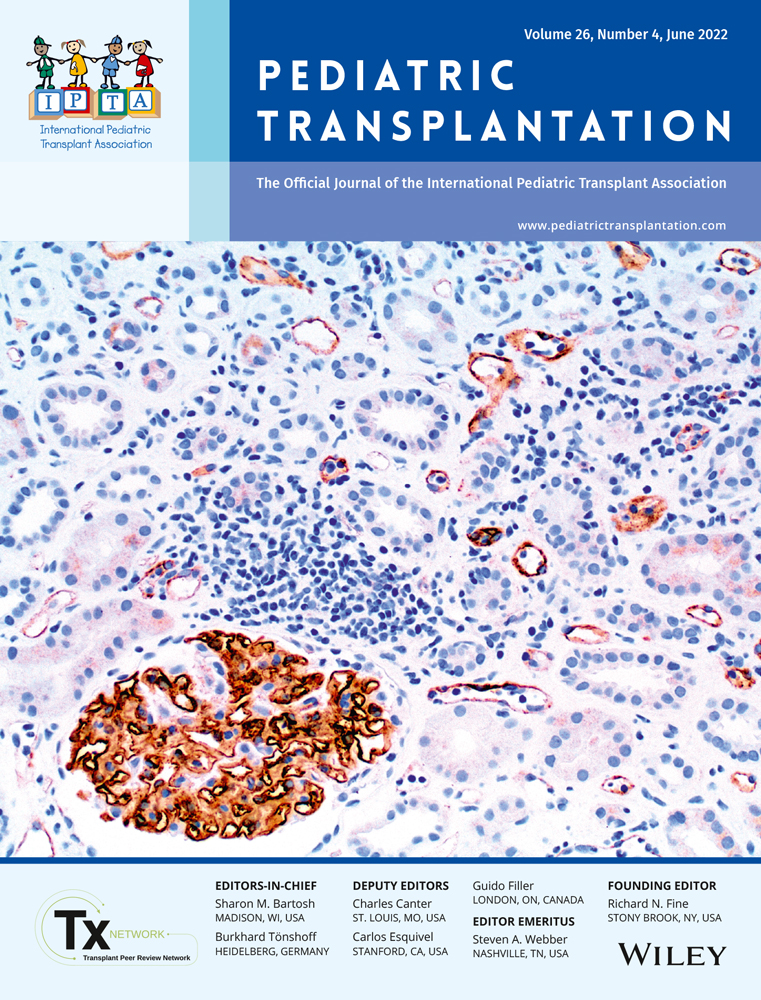Diagnostic performance of 2D-shear wave elastography and serum fibrosis markers for evaluation of hepatic graft fibrosis in pediatric liver-inclusive transplant recipients: A prospective pilot study
Funding information
This work was supported by a grant from the University of Nebraska Medical Center Child Health Research Institute
Abstract
Background
Liver biopsy is the gold standard for hepatic fibrosis staging, but it is invasive and has potential severe complications. We aimed to determine the diagnostic performance of 2D-SWE and serum markers to predict significant hepatic graft fibrosis (≥F2) in pediatric liver-inclusive transplant recipients.
Methods
This prospective, cross-sectional pilot study included children younger than 19 years who had received a LT or LSBT and underwent a liver biopsy performed for clinical indications. LS was measured using 2D-SWE. The AUROC was calculated to evaluate the diagnostic performance of 2D-SWE and biomarkers (AST/ALT ratio, APRI, FIB4) for predicting significant fibrosis.
Results
Twenty-two children (13 males, 8 LSBT) were included. Eighteen (81.8%) children received a whole liver graft. Thirteen (59.1%) patients had hepatic fibrosis (≥F1) and four (18.2%) had significant fibrosis. The AUROCs of AST/ALT ratio, APRI, and FIB4 for predicting significant hepatic graft fibrosis were 0.71 (p = .29), 0.85 (p = .0001), and 0.76 (p = .03), respectively. When FIB4 was calculated using the hepatic graft's age, its AUROC improved to 0.85 (p < .0001). The AUROC of 2D-SWE for predicting significant hepatic graft fibrosis was 0.80 (p = .046). When 2D-SWE was combined with APRI or FIB4, its AUROC improved to 0.82 (p = .08) and 0.87 (p = .002), respectively.
Conclusions
APRI and FIB4 can accurately predict significant hepatic graft fibrosis. 2D-SWE may serve as a valuable adjunct tool to detect significant graft fibrosis, especially when combined with these serum markers.
CONFLICT OF INTEREST
The authors declare no conflicts of interest relevant to this work. T.J.M. has received research support and speaker's fees from Alexion Pharmaceuticals. There was no overlap with the work reported here.
Open Research
DATA AVAILABILITY STATEMENT
Research data are not shared.




